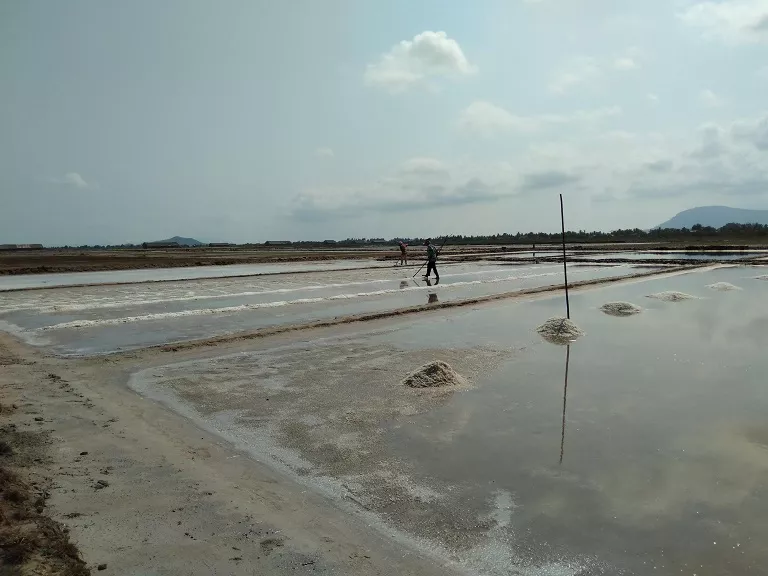Salt Fields | Kampot Cambodia
The salt fields of Kampot have been a prized destination for tourists and locals alike. These vast expanses of mirror-flat salt pans shimmer under the scorching sun, producing some of the world's finest and most coveted sea salt.

In an era where industrialized processes dominate many industries, it is heartening to see the continued use of a traditional method in Kampot. The salt farmers of this region have preserved their heritage by adhering to the same techniques used for generations past. This labor-intensive process involves manual harvesting of sea water from the nearby sea and transferring it into shallow pools called "solar pans" or "salt fields." As the water is left exposed to the sun, its moisture evaporates, leaving behind crystallized salt.
A day's work for a Kampot salt farmer begins before dawn. With the sun at their backs, they make their way to the sea to collect seawater in baskets or buckets. The water is then carried back to the salt fields, where it is left to evaporate under the intense heat of the tropical sun. This process can take anywhere from 2-5 days, depending on weather conditions.
Salt, an essential mineral found in every human cell, plays a crucial role in various bodily functions, including maintaining fluid balance and nerve function. It is also used extensively in food preservation, flavor enhancement, and as a critical component in the production of numerous products such as pharmaceuticals, cosmetics, and dyes.
While the traditional method used in Kampot has its charm, other methods are employed to produce salt on a larger scale. Solar evaporation ponds, which cover vast areas of land, are used by some companies to harvest sea water and extract salt. However, this process involves significant resources and energy consumption.
Beach Beautiful bays statue Bus Station Cambodia Vietnam Friendship Statue Clock Tower Durian Roundabout Rainbow Bridge (Old Bridge) Firefly Cruise International Port Kamchay dam Kampong Bay Bridge (New Bridge) Kampong Bay Fountain King Ang Duong Statue Lotus Pond Pagoda Province Stadium Provincial Museum River Beach Riverside Fitness Salt Workers Roundabout Wave Roundabout Year 2000 Monument
